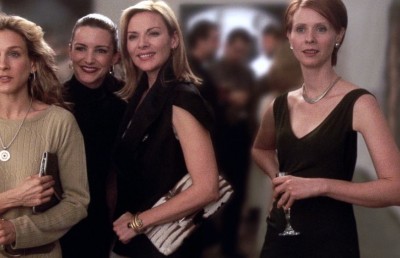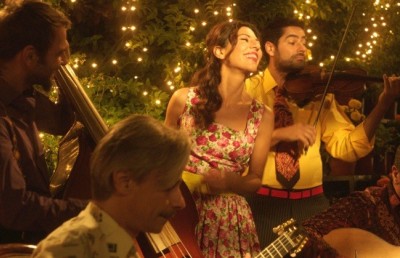From Little Steps to Little Mosque: Transnationality in Canadian Television
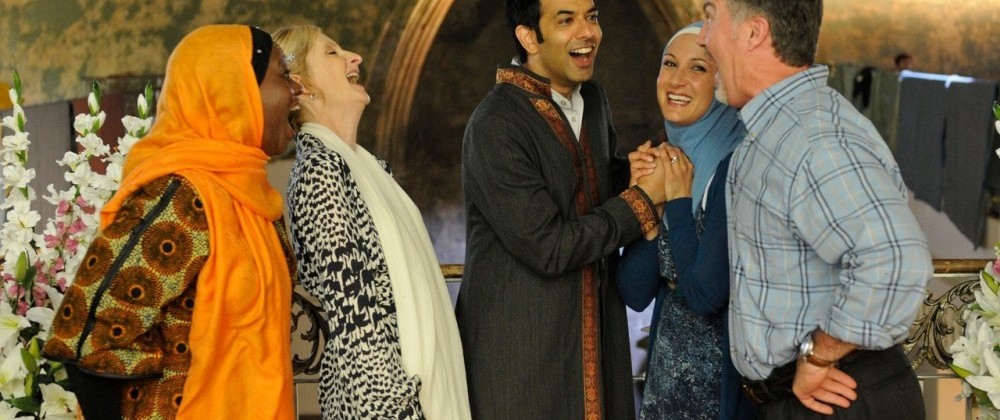
Introduction
Little Mosque on the Prairie first aired in 2007 in a country that has embraced many Muslims as immigrants over the years. It was released in the aftermath of the September 11 terrorist attacks in New York and Washington, when the U.S. and Iraq, a predominantly Muslim country, were at war. The post-9/11 era was a time when Muslims in North America were being persecuted both by civilians in their daily lives and by the government in ways that included being forced to sign up for a Muslim registry in the U.S. or being subjected to full body searchers at airports — something that Nadine Naber (2008) describes as “Nation-based racism” in the post 9/11 period.
Following a thorough review of the literature on transnational cinema, the present essay will cite examples of early multicultural productions in Canadian television and discuss whether they can be considered true transnational productions, before addressing the implications of 9/11 for Muslims and their depiction in Television. The essay will recount historical accounts of directors attempting to make shows with Muslim protagonists and the resistance of TV executives in the post-9/11 America. The essay will then analyze Little Mosque on the Prairie, which aired its last episode in 2012, and discuss whether it could be considered as a transnational television production.
Literature Review
Any discussion of the term “transnational” is contingent upon an understanding of “nation,” “state,” “national identity,” and “nationalism.” German sociologist Max Weber defines state as “a human community that claims the monopoly of the legitimate use of physical force within a given territory,” (Weber, 1919/1965). One of the most important features of state as a construct is its geographical bounds, or “territory,” which confines it to a physical place. Then, there is a body or bodies within that geographical place that claim legitimacy to exert power, which Weber refers to as “use of physical force,” over people living there.
The term nation, however, is a concept not bound by the physical world. Weber describes nation as “community based on feeling, for which its own [state] would be an adequate expression” (Norkus, 2004). Nation, therefore, is an abstract concept that refers to a feeling among citizens of a state that somehow, they have affinity and share similar interests. Benedict Anderson calls it “an imagined political community” (B. R. O. Anderson, 2006). He argues that nation is a “community” because “regardless of the actual inequality and exploitation that may prevail in each, the nation is always conceived as a deep, horizontal comradeship. Ultimately it is this fraternity that makes it possible, over the past two centuries, for so many millions of people, not so much to kill, as willingly to die for such limited imaginings,” (B. R. O. Anderson, 2006, p. 7). Anderson also explains that nation is “imagined” because “members of even the smallest nation will never know most of their fellow-members, meet them, or even hear of them, yet in the minds of each lives the image of their communion,” (B. R. O. Anderson, 2006, p. 6).
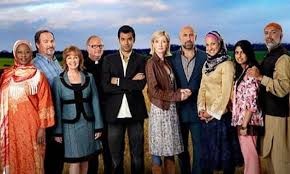
Yet another highly cited definition of nation is “a named human population sharing an historic territory, common myths and historical memories, a mass, public culture, a common economy and common legal rights and duties for all members,” (Smith, 1991, p. 14).
Protecting the “sense of belonging” and “fellow feeling” is what drives nationalism (Connor, 1978), which is the “ideological movement for attaining and maintaining autonomy, unity and identity on behalf of a population deemed by some of its members to constitute an actual or potential nation,” (Smith, 1991, p. 73).
National identity involves a certain degree of commonality based on a set of common features (as described earlier) that bind the members of the nation together. These features range from ethnic ties to a shared public culture, common historical memories and links to a homeland and also a common legal and economic system. But national identity also highlights the difference among the members of the nation as well as members of other nations. Inherent in national identity is the acknowledgement of other nations or individuals, who do not belong to the nation and from which the nation must be distinguished (Triandafyllidou, 1998).
A nation, therefore, is a “community” of people who share a common culture and “historical myths” and have a “sense of belonging” as a group within the borders of a state — which is the legitimate power that enforces rule of law — whose people are different from others beyond the borders. When the term “transnational” was introduced in late 1980s, it referred to the general concept that these borders were permeable, in that others from different states could cross the borders, but it has evolved over the years to incorporate the idea of nationalism and what it means to be a member of a nation (Ďurovičová & Newman, 2010). Transnational is different from “international,” which implies a relationship between political systems, or states, and is also different from “global,” which implies totality and universality (Ďurovičová & Newman, 2010). The term “transnational” acknowledges that states have agency, but views the agency of state in relationship with the scale of “the nation,” (Ďurovičová & Newman, 2010). While recognizing this link the term “transnational” implies that people, objects, ideas and art forms transcend the bounds of geopolitical forms and are influenced by the state and the nation to various degrees.
A simple act of crossing borders does not constitute transnationality, rather the extent to which one brings one’s national identity and sense of nationalism and the extent to which these values are influenced by, and assimilated into, the host nation does.
National and Transnational Cinema
There are two ways to define national cinema. “For the industry, national cinema is determined by the place that provides the capital irrespective of where the films are made or the nationalities of the directors,” (Jimmy Choi, 2002). This means that a movie like Alien (1979) will be considered an American production despite being directed by Ridley Scott, a British filmmaker, and being filmed in the UK.
The other way to classify a film as a nati onal production is by looking at “the language spoken, the nationalities of the protagonists, the dress, the setting, the locale, the music, and …cultural icons,” (Jimmy Choi, 2002). The notion of national cinema is closely associated with territory. Many of the above elements such as language, dress, and people are related to the locale, which is one of the features of National Identity. Apart from the tangible audio and visual elements which filmmaking excels in presenting, there are other less tangible elements presented through the story and the narrative. They are the history, the myth, the norms, and common beliefs of a nation that constitute the themes or the cultural context for the film stories (Jimmy Choi, 2002). Despite being funded by the UK, Jordan, and Qatar and filmed in the latter country, Under the Shadow (2016), is a Persian production because not only is it directed by a Persian director, the characters are all of Persian origin , living in post-revolution Iran, wear clothing popular (or mandatory) in Iran, and all the tangible elements of the film resemble Iran in 1980s. Less tangible elements such as myths, urban legends about supernatural beings, the apparent affinity between neighbors and the family dynamics also point to the film being a Persian production.
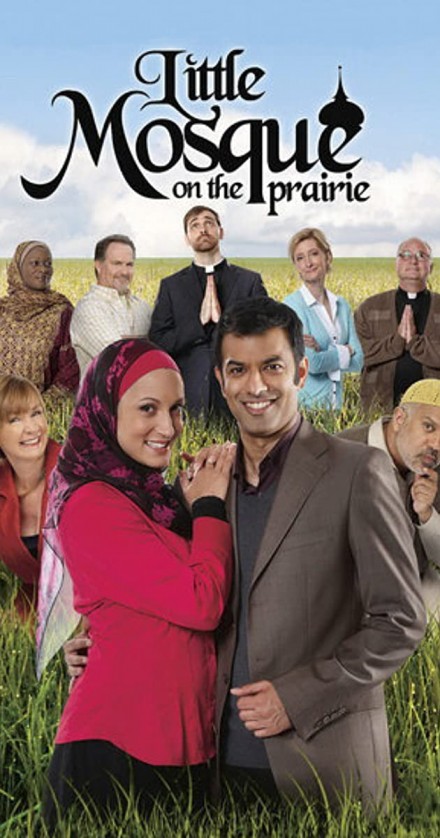
Elizabeth Ezra and Terry Rowden (2006) define Transnationalism as the global force that links people or institutions across nations. Transnationalism, they argue, is the recognition of the decline of national sovereignty as a regulatory force in global coexistence. The fact that that it is no longer possible to assign a “fixed national identity” to cinema on many occasions reflects “the dissolution of any stable connection between a film’s place of production and/or setting and the nationality of its makers and performers.”
Transnational cinema deals with a range of topics within Film Studies including but not limited to, content, circulation, production, and reception of films globally, there are two ways in which cinema operates on a transnational basis: first is the level of production and activities of film-makers, and second in terms of distribution and the reception of the films (Higson, 2000).
The concept of Transnational cinema posits that as mode of representation cinema has fundamental transnational tendencies, crossing borders and contradicting national ideology’s attempt to contain culture and identities within enclosed borders or “imagined communities.” Globalization has impacted the state known “as the primary unit of economic, political and cultural differentiation in the world system,” (Hjort & Petrie, 2007, p. 8).
On the one hand, globalization includes transnational imperatives, the deregulations of markets, increasing geographical mobility of labor, global penetration of communications networks facilitating cultural exchange in various forms of business, information and entertainment. In the cinema business, this global trend corresponds, partly, to a general reinforcement of the presence of American cinema in the national cinemas. On the other hand, the field of film studies has simultaneously become more interested in world cinemas and has seen the emergence of new studies of individual national cinemas beyond the traditional focus on North American and European national cinemas. Recent studies have focused on emergent national cinemas of Asia, Africa and Latin America and exactly how these cinemas respond to transnational and global conditions. Consequently, the emergence of these national cinemas in a globalized context has influenced these new national cinemas with transnational perspectives.
Transnationalism in Canada
“Canada is not a ‘nation-state’ or a ‘state-nation,’ but rather a ‘nationalizing-state.’
While the former two categories imply some sense of achieved cohesion, the term nationalizing-state’ is intended to convey the sense of the state’s ongoing involvement in identity-building projects,” (Osborne, 2006). As such many of the early Canadian art forms took the form of “national literature” or “national cinema,” etc.
In literature, titles like Arthur Lismer’s A September Gale (1921), Pine Tree and Rocks (1921), or his Bright Land (1938) as well as A. Y. Jackson’s Terre Sauvage (1913), Lawren Harris’ Winter Sunrise (1918), and Tom Thomson’s The Jack Pine (1916-17) among others, have become the iconic renderings of Canadians’ quintessential engagement with nordicity, isolation, and Nature (Osborne, 1998). That is, Canada’s experience of national-culture building has relied much upon an arboreal model that emphasizes rootedness in place and an essentially fixed metanarrative of a heroic survival in the face of adversity (Osborne, 2006). Similarly, in the big and small screen business titles like Road to Avonlea (1990-1996) and Due South (1994-1999) deal with the same themes.
Canadian Multiculturalism Act was declared in 1971 by Pierre Elliot Trudeau. The act proclaimed multiculturalism as the official policy of the Canadian government, mandating the preservation of multicultural heritage and reaffirming the equal rights of all people of various backgrounds, ethnicities, religions and genders. The policy was aimed at curbing persecution and the fear of persecution, allowing everyone to freely pursue their interests. However, it took the policy decades to manifest itself in Canadian television series. Throughout the 1980’s and 1990’s Canadian TV shows remained focused on Canadian culture and nation. A new “Broadcasting Act” was passed in 1991 that maintained a position of commitment to the promotion of Canadian cultural objectives, particularly “national identity and cultural sovereignty,” (Schultz, 2016).
Only recently has the Canadian Television exhibited a shift toward multiculturalism and transnationalism in the themes and content that it provides for the viewers. “More recent developments in the history of Canadian television include the fact that the Canadian Association of Broadcasters set out guidelines for voluntary cultural diversity.
The guidelines state that ‘private broadcasters shall make an effort: to reflect, ….the…multicultural and multiracial nature of…Canadians, and the special place of aboriginal peoples within Canadian society,’” (Schultz, 2016, p. 4).
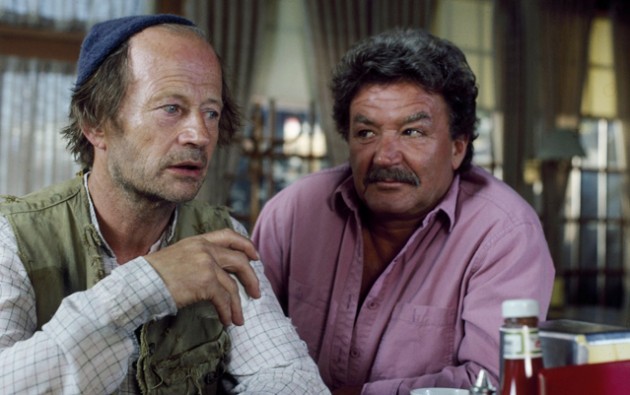
“Accountable to Parliament, the CBC has a mandate to increase both multicultural programming and regional programming about life in rural provinces,” (E. Anderson, 2016, p. 1012). Following this development Canadian television underwent a transformation that reflected the presence of other cultures within the borders of Canada and Canadian series began exhibiting signs of transnationalism. The Beachcombers (1972-2004), King of Kensington (1975-1980), Seeing Things (1981-1987), and Degrassi Junior High (1987-1991), are generally considered as multicultural productions and as the initial steps toward transnationalism in Canadian television.
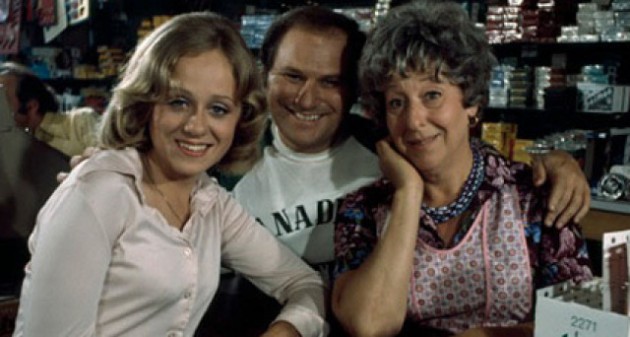
The Beachcombers, one of the longest running Canadian series, began airing shortly after the declaration of Canadian Multiculturalism Act and was one of the earliest shows to incorporate elements of multiculturalism. The main character of the show, Nick Adonidas, portrayed by Italian-Canadian actor Bruno Gerussi, was of Greek decent while his rival Relic (Robert Clothier) was Welsh. The series explored the cultural heritage of the characters and even had Nick travelling back to Greece at some point. King of Kensington, a sitcom about Larry King (Al Waxman), the owner of King Variety store located at the heart of Kensington Market, celebrates the diverse make-up of an urban Toronto, presumably where many immigrants arrive from their home countries. Both series were based on a similar representation of Canadian diversity as they portray Canadian multiculturalism in rural arears, where The Beachcombers is set, and urban environment where King’s Variety store is located (Matheson, 2006). However, neither series goes beyond multiculturalism to venture into the realm of transnationalism at a production level.
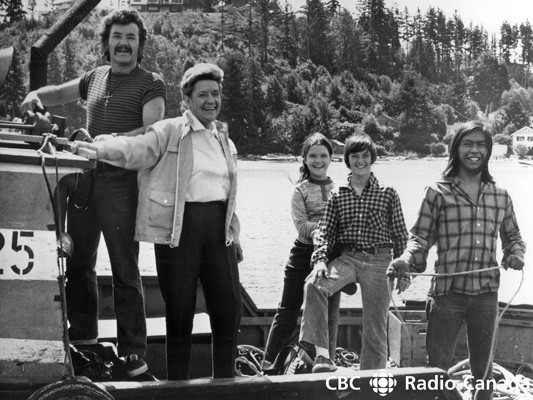
Seeing Things, a formulaic narrative about a clairvoyant journalist assisting authorities in solving murders, comments on “Canada’s marginal status as a cultural and an ideological producer” (Druick & Kotsopoulos, 2008, p. 282). The show frequently makes references to the “increasing marginality of local citizens to the policies and structures that comprise their nation” (Druick & Kotsopoulos, 2008). The series portrays a Toronto consumed with urbanity and on its way to achieve a “global” status, while this could be perceived a sign that Seeing Things is venturing into transnational territory, it could also be perceived as a commentary on how decision-making practices are “so far removed from the citizens and from the tangible frameworks of space and time that these processes appear to occur within the paranormal” (Druick & Kotsopoulos, 2008, p. 286). Furthermore, while characters of a diverse background do appear in the show, the protagonist and the majority of recurring characters are white Canadians. The limited screen time allocated to “diversity hires” of the show undermines an important tenet of transnationalism identified by Ďurovičová and Newman (2010), which deals with the extent to which one brings their own sense of identity and culture and the extent to which those ideas are assimilated in the Canadian society.
Degrassi Junior High, the second series in the Degrassi franchise, revolves around the lives of teenagers attending Degrassi high school and tackle societal issues ranging from drugs to homosexuality and racism. While the franchise was hailed as a multicultural production that brings together a diverse cast, many of its storylines “depict minorities and ‘ethnic’ whites as more racist than white Canadians, and they inherently construct white Canadian identity as superior yet vulnerable” (Thompson-Spires, 2011). The franchise implies that a Canadian, as Mackey (2002) describes it, “is an anti-racist white person, a non-hyphenated citizen, or a “‘Canadian-Canadian,’” who exhibits greater tolerance for minorities than the other way around. Therefore, since the Degrassi series portray non-Canadian “others” as racist, it does as much damage to multiculturalism as it attempts to celebrate it – if not more – and as a result cannot be considered true transnational productions.

All of the series mentioned were distributed and well-received in other countries, therefore, they can be considered transnational productions only by the second standard set by Higson (2008) — which was discussed in the previous section — but not the first. It is worth noting that these series came at time where confidence in Pierre Trudeau as prime minister was low, the economy was on the decline, the threat of a sovereign Québec was on the rise (Matheson, 2006) and acceptance of immigrants and cultural diversity was limited to certain communities in urban areas that shielded non-Canadians from prejudices of more suburban and rural communities (Cochrane & Pietropaolo, 2000). Therefore, while they did not provide an immersive transnational experience, at least two of the series – i.e. The Beachcombers and King of Kensington – did serve as a force of national unity. Little Mosque on the Prairie, however, goes a step further by not only celebrating diversity and promoting national unity, but also by offering glimpses into the extent to which the main characters brought their own cultural experience and the extent to which they were influenced by Canadian culture in addition to providing context for Islam as a religion and Muslims of Canadian and non-Canadian descent, through reducing ambiguities surrounding the faith and quelling misconceptions at a time when Muslim were being persecuted in
North America.
Based on FBI data, hate crimes against Muslims climbed from 28 in 2000 to 481 in 2001, and although it did decrease in the following years it never plunged to pre-9/11 levels. While Hollywood representation of Muslims has been more sympathetic, some shows opted to show two sides of the Muslim community: the “terrorist” side and the positive side (Alsultany, 2013). But this representation fostered a “new kind of racism, one that projects antiracism and multiculturalism on the surface but simultaneously produces the logics and effects necessary to legitimize racist policies and practices” (Alsultany, 2013).
Examples of this kind of representation can be found in 24, where in many seasons a Muslim terrorist, usually from and unspecified or fictitious country, plans a terrorist attack but his plot is foiled with the help of the terrorists’ Muslim friends or family members, who assist the protagonist in their counter-terrorism effort. Palestinian-American director Cherien Dabis believes that this practice is “a hidden policy in Hollywood.” In a discussion held in New York, she recounted a meeting with TV executives in which she pitched a family drama about a Muslim family. She added that everyone suggested to her that the show must have a terrorist component, “But I lost interest in the show because I was like, we can’t keep showing Muslims as terrorists, even if it’s just a false accusation,” (Ryzik, 2016).
Zarqa Nawaz, the creator of Little Mosque on the Prairie, who was one of the participants of the aforementioned discussion stated that when she came up with an idea about a show surrounding a Muslim family the executives responded, “There is no way an American network is going to have a Muslim woman with a hijab on television. Get her out. We will not do it” (Ryzik, 2016).
In a sense Little Mosque came at a time where prejudice against Muslim was far worse than the anti-immigrant sentiments of the 1970s, yet the show managed to delve deeper into the culture and faith of its minority characters as the next segment of the present document will discuss.
Case Study: Little Mosque on the Prairie
Little Mosque on the Prairie first aired in 2007 in a country that has embraced man Muslims as immigrants over the years. It was released in the aftermath of 9/11 when U.S. and Iraq were at war, at a time when Muslims in North America were being persecuted something that Nadine Naber (2008) describes as “Nation-based racism” in the post 9/11 period.
Taking place in the imaginary town of Mercy, Little Mosque is a sitcom about a community of Muslims brought together by a little mosque. The series depicts the struggles of Muslims living in Canada. The characters in the series are from different backgrounds and each brings a unique perspective on what it means to be a Muslim living in Canada.
Characters
Amaar Rashid, a Canadian-born Imam of Middle-Eastern descent, comes from a wealthy background, but has given up his privileged lifestyle to serve God in a small prairie town.
Rayyan Hamoudi, whose father is a Lebanese Muslim and whose mother is a Canadian convert, is a doctor and Islamic feminist, who becomes the love interest of Amaar. Rayyan’s character goes through several arcs. She has to overcome challenges like hiding her feelings for Amaar in accordance with Islamic modestly tradition, her parent’s divorce, agreeing to a traditional marriage that falls through in the last minute and discrimination due to her religion and appearance, as she wears Hijab (headscarf) throughout the series.
Yasir Hamoudi, Rayyan’s father, is a construction contractor. He is an opportunist character; whose office is in the mosque’s basement. Although he claims that he is there to help the mosque, it is revealed that Yasir is mainly interested in the free office space. In the later seasons Yasir returns to Lebanon and eventually divorces Sarah, Rayyan’s mother.
Sarah is an important character as she is the only convert in the series. She struggles with observing some of the principles of Islam such as wearing a Hijab, despite having a religious daughter. After her divorce, she goes through a period of internal conflict over her faith and she briefly returns to Christianity before choosing to remain a Muslim.
Baber Siddiqui is an immigrant Imam-wanna-be, who has – on the surface – ultra- conservative Islamic views. He wears traditional Muslim clothing and refers to all non-Muslims as infidels. Baber believes that Amaar is not conservative enough to be an Imam. However, he exhibits open-minded characteristics, leaving audiences to believe that his ultra conservative views are largely just for show.
Fatima Dinssa is a Muslim Nigerian immigrant, who brings together the Muslim and non-Muslim people of Mercy at her restaurant with her exceptional culinary skills. She becomes a Canadian citizen over the course of the series, familiarizing audiences with the process that immigrants go through to become a Canadian citizen.
Analysis and conclusion
The series helps viewers understand that Islam is not a culture, it is the religion that many people from different cultures, nationalities and ethnicities have in common and it also shows viewers that being Muslim and Canadian are not at odds and educates Non-Muslim audiences on many of the Islamic practices and principles of religion. The series gives a glimpse into the lives of Muslim Immigrants and Canadian Muslims as well as Christian Canadians. It also promotes religious tolerance and immigrant integration in a western society. “Westwind Pictures selected a song for the closing credits that is deeply rooted in Islamic tradition. Arranged and performed by Egyptian-Canadian artist Maryem Tollar” (E. Anderson, 2016, p. 1013).
Although Little Mosque takes place in the small town of Mercy, Saskatchewan, it does not depict the daily lives of people who have been brought up within the same territory and share a cohesive national history, believe in shared myths and have a common cultural and religious background or customs. “Mercy’s mosque congregants represent a range of transnational identities; characters trace their origins across Africa and Asia and occupy different places on a spectrum of ideological positions” (E. Anderson, 2016, p. 1011). In that respect, despite being funded by Canadian producers, being filmed in Canada with a mostly Canadian cast, Little Mosque does not fit the bill of a “national” production by Smith’s standards. In contrast, for example, the main characters of King of Kensington do share the same territory, history, and background.
There is something about Little Mosque that appeals to audiences from a wide range of states and of different nationalities: “The series has been exported to over eighty countries,” (E. Anderson, 2016, p. 1012). To Canadian audiences, it tells the story of how their fellow Canadians of immigrant descent assimilate in Canada. To Muslims in other countries it’s a tale of how people who share their religion and perhaps even their ethnicities reevaluate their values and become productive members of a relatively new, foreign society. For Canadian Muslims, Little Mosque is one of the few opportunities to see their similar others on TV. In that sense, Little Mosque breaks stereotypes of Muslims, who are often depicted as terrorists or villains in Western television and cinema, and transcends borders by incorporating foreign cultural elements and is the embodiment of a transnational production. Little Mosque on the Prairie, therefore, checks both boxes that Higson (2008) offers for his classification of transnational production – i.e. production as well as reception and distribution.
The fact that creator Nawaz was able to find support in CBC for Little Mosque on the Prairie, at a time when her idea was shot down in the US also points to the openness of Canadian television and attests to its embrace of transnationalism.
“Drawing from my passionate belief in the right to communicate, I consider airing such a controversial and sensitive topic over a public broadcaster is certainly a serious attempt to bridge mainstream public knowledge with an awareness of ‘other’ cultural frameworks in Canada,” Nawaz said about her show (Dakroury, 2008).
Little Mosque provided an opportunity for Muslim minorities to communicate to the rest of the population for the first time in mainstream North American airwave history. Dakoury (2008) calls this the embodiment of the Universal Declaration of Human Rights in the 1940s as for the first time Muslim Canadians exercised their right to communicate “to voice their language, culture, rituals, and opinions in the publicly owned media.”
Thanks to the Canadian broadcasters, Canada is the most accepting nation of others – especially Muslims, with only 6.5% Canadians being opposed to the idea of living beside a Muslim neighbor according to a poll of 23 western countries. Dakoury (2008) views this finding a result of CBC’s decision to air Little Mosque in the highly-coveted prime time slot.
Interestingly, among distributors that acquired the rights to Little Mosque on the Prairie are Hulu and Pivot which respectively streamed and aired the series in the United States, where TV executives believed there was “no way an American network [was] going to have a Muslim woman with a hijab on television.
Authors postions the show within the context of earlier Canadian TV shows that were the first to reflect the new Trudeau multiculturalism act, but argues that Little Mosque is the first (or one of the first) Canadian shows to go further than multiculturalism to portray an transnational ideology of social representation, where Canadians were exposed to a broader, realist depiciton of Muslinm identity.
References
Alsultany, E. (2013). Arabs and Muslims in the Media after 9/11: Representational Strategies for a “Postrace” Era. American Quarterly, 65(1), 161–169. https://doi.org/10.1353/aq.2013.0008
Anderson, B. R. O. (2006). Imagined communities: reflections on the origin and spread of nationalism (Rev. ed). London ; New York: Verso.
Anderson, E. (2016). Adapting the Transnational Prairie: Little House, Little Mosque , and Little Laos. The Journal of Popular Culture, 49(5), 1003–1022. https://doi.org/10.1111/jpcu.12462
Bennett, D. (2001). Multicultural states rethinking difference and identity. London: Routledge.
Clark Donnelly, & Mary Darling. (2007). Little Mosque on the Prairie. Canada: CBC.
Cochrane, J., & Pietropaolo, V. (2000). Kensington. Erin, Ont. : Niagara Falls, N.Y: Boston Mills Press ; Distributed in the U.S. by General Distribution Services.
Dakroury, A. (2008). CBC’s Little Mosque on the Prairie: Just a “Little Masquerade”? Media Development, 55(3), 42–46.
Druick, Z., & Kotsopoulos, A. (Eds.). (2008). Programming reality: perspectives on English-Canadian television. Waterloo, Ont: Wilfrid Laurier Univ. Press.
Ďurovičová, N., & Newman, K. E. (Eds.). (2010). World cinemas, transnational perspectives. New York: Routledge.
Ezra, Elizabeth and Rowden, Terry (eds) (2006b), ‘General Introduction: What is Transnational Cinema?’, in Elizabeth Ezra and Terry Rowden (eds), Transnational Cinema: The Film Reader, London: Routledge, pp. 1–12.
Ezra, E., & Rowden, T. (2010). Transnational cinema: the film reader. London: Routledge.
Higson, A. (2000). The Limiting Imagination of National Cinema. In M. Hjort & S. MacKenzie (Eds.), Cinema and nation (pp. 63–74). London ; New York: Routledge.
Hjort, M., & Petrie, D. J. (Eds.). (2007). The cinema of small nations. Bloomington: Indiana University Press.
Holt, J. (2011). Empires of entertainment: media industries and the politics of deregulation, 1980-1996. New Brunswick, N.J: Rutgers University Press.
Jamal, A. A., & Naber, N. C. (2008). Race and Arab Americans before and after 9/11: from invisible citizens to visible subjects. Syracuse, NY: Syracuse University Press.
Jimmy Choi. (2002, October 16). Is National Cinema Mr. MacGuffin? University of Leeds. Retrieved from http://archive.is/PsGl#selection-49.1-49.20
Mackey, E. (2002). The house of difference: cultural politics and national identity in Canada. Toronto: Univ. of Toronto Pr.
Matheson, S. A. (2006). Ruling the Inner City: Television, Citizenship and King of Kensington. Revue Canadienne d’Études Cinématographiques / Canadian Journal of Film Studies, 15(1).
Norkus, Z. (2004). Max Weber on Nations and Nationalsim: Political Economy before Political Sociology. The Canadian Journal of Sociology, 29(3), 389–418.
https://doi.org/10.1353/cjs.2004.0045
Osborne, B. S. (1998). Some thoughts on landscape: Is it a noun, a metaphor, or a verb? Canadian Social Studies, 32(3), 93–97.
Osborne, B. S. (2006). From Native Pines to Diasporic Geese: Placing Culture, Setting Our Sites, Locating Identity in a Transnational Canada. Canadian Journal of Communication, 31(1). https://doi.org/10.22230/cjc.2006v31n1a1781
Ryzik, M. (2016, November 30). Can Television Be Fair to Muslims? Retrieved from https://www.nytimes.com/2016/11/30/arts/television/can-television-be-fair-to-muslims.html
Schultz, J. L. (2016). A Transnational Study of Law & Justice on TV: Canada. Browser Download This Paper.
Smith, A. D. (1991). National identity. Reno: University of Nevada Press.
Thompson-Spires, N. (2011). Tolerated, but not Preferred: Troubling the Unconscious of Televisual Multiculturalism. The American Review of Canadian Studies, 41(3), 293–304.
Triandafyllidou, A. (1998). National identity and the “other.” Ethnic and Racial Studies, 21(4), 593–612. https://doi.org/10.1080/014198798329784
Weber, M. (1965). Politics as Vocation. (Original work published 1919)



